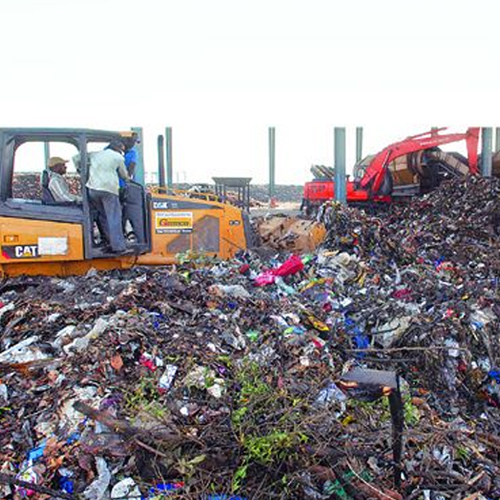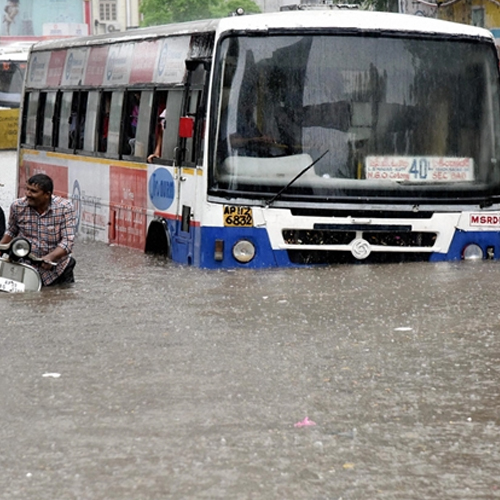Summer should conjure up visions of long cool showers and lazing around in a deep blue pool with a chilled drink but for most Hyderabadis, summer is that awful time of the year when we are frantically calling for tankers that cost more than the kids school fees or waking up at 4 am to store two buckets of drinking water. Drooping, dried up plants and lawns and the deafening din of someone drilling a bore well that pumps not a drop of water are what most Hyderabadis associate with summer. This is the situation in an upscale locality like Jubilee Hills.
Just a few kilometres away, is Mastananagar, a lower middle class area. The situation is even grimmer here. “We get only 2 buckets of water, once in 4 or 5 days,” says Revathi, a domestic helper who lives here. This would not be the situation if residents became aware of how to recharge groundwater and make the most use of rainwater harvesting.
We had the pleasure of meeting one of the members of SAHE (Society for Advancement of Human Endeavour), Ms Kalpana Ramesh at her lovely, eco-friendly home.
Kalpana has worked extensively on her own house to harness the bounty of the monsoon season. Beneath her lovely garden is hidden a 30000 litre rainwater sump that stores filtered rainwater collected from her rooftop. This water can last to almost a year and is pure enough to be used for drinking purposes. She was kind enough to explain how many of us can stop being dependent on tankers, municipal and bore well water simply by storing rain water during the monsoons.
Harvesting rainwater from rooftops is a fairly uncomplicated, inexpensive procedure. Most houses already have sumps for storing municipal, bore or tanker water. Rainwater is diverted from rooftops to these sumps during monsoons. A separate tank can also be maintained for this purpose. A 5000 litre sump can collect 50mm of rainfall from a 300 sq. meter roof area.
In case of already constructed house, the existing pipes can be used with an additional few for directing water into the sump. In new constructions, 4” to 5” diameter PVC down pipes can be used. This can be done in any kind of residential or office building.
The discharge point in the roof should be connected to the down water pipe. A grill, mesh or floor trap at the discharge point needs to be installed to prevent fallen leaves or any other small objects from entering the pipe.
In case of sloping roof, a cast-in-situ half round gutter across the slope, all along the edge needs to be installed to collect rain water. A half-turned galvanized iron sheet placed horizontally all along the edge of the roof can also be used to capture the water from the roof. A grill or mesh at the inlet of the down water pipe can be fitted to prevent fallen leaves from entering the pipe. A first rain separator is fixed before the filter. The filter is connected at the end of the down water pipe. Using horizontal pipes, the filtered water can be directed into the sump. In addition, an outflow pipe can be installed in the sump that will cause excess water to be diverted to recharge any existing bore or aquifer beneath.
The estimated cost of a new sump construction is Rs. 5 per litre. In an existing house with a sump tank the cost could be around 5000-10000 depending on the plumber costs.
This simple, inexpensive procedure can go a long way in ensuring that future summers will not be marred by fears of water shortage. You can surround yourself with greenery and indulge in refreshing cool showers without worrying about where the next tanker of water is coming from.







